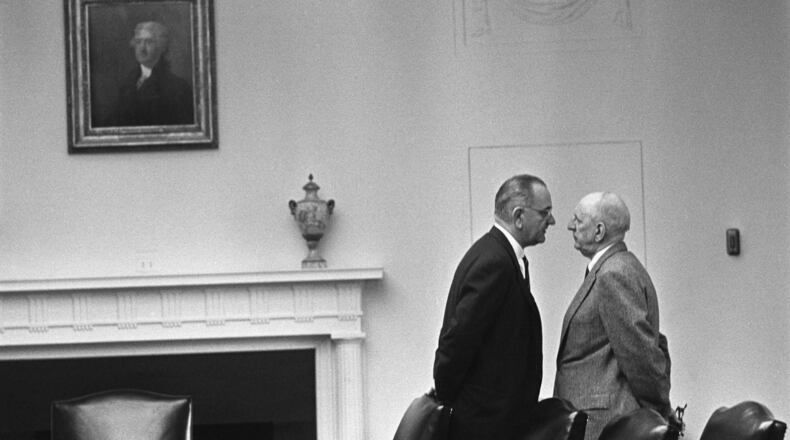For 38 years, from 1933 to 1971, Richard B. Russell Jr. served Georgia as a U.S. senator, and for much of the time he may have been the single most powerful legislator in Washington, earning such respect from his peers that after his death, they named a Senate office building in his honor. A statue of Russell now stands in the rotunda of that building.
For those 38 years, Russell was also a stalwart defender of segregation and white supremacy, blocking every civil rights and anti-lynching law that came his way. He was, in short, a racist.
In the Daily Beast, Washington writer Mike Tomasky recounts that history in proposing that the Russell Senate Office Building be renamed. As Tomasky notes, Russell "may have done more to hold back civil rights and integration in this country than any other single individual." And if Russell's stance was perhaps "understandable, given the time and place of his birth and rearing," Tomasky argues that "it's no longer forgivable to such an extent that one of only three Senate office buildings has to bear his name."
I disagree. I disagree not in defense of Russell, but in defense of history and all of its complications. We should not wipe people like Russell from our collective memory -- he reminds us that otherwise good people can do very bad things. And there's every indication that the building was named in his honor despite, not because of, his history of racism. That's an important distinction.
Because where do you stop once you begin such a purging process? Our nation's capital, Washington, D.C., is named for a major slaveowner. The Jefferson Memorial honors an eloquent advocate of liberty who kept slaves, sold slaves, fathered children with a slave and held some of his own children as slaves until his death.
That's who we are. That's our American heritage.
As I reminded Tomasky in a friendly email, he's from West Virginia, where practically every building with an American flag flying in front of it is named in honor of Sen. Robert Byrd. Byrd served alongside Russell and had his own history of racism. To his credit, Byrd later publicly and emotionally recanted that racism, but then again, so did George Wallace.
In the 1940s, Byrd was even a member of the KKK in southern West Virginia, which means that he may have traveled in the same circles as Walter Bookman, my grandfather, a KKK member who lived 15 miles down the road. I never met my grandfather -- he died before I was born -- but I do know that he helped raise a darned good man in my father. Like I said, it gets complicated.
So yes, take down the Confederate flags, at Stone Mountain Park and elsewhere. They should not fly in any official or state-sanctioned capacity. Anything that smacks of an ongoing, current-day celebration of the Confederate cause should end, including state holidays.
But leave the statues of Civil War soldiers as a reminder of who we've been. Leave the carving of the Confederate leadership on Stone Mountain. Yes, the sculpture was begun during the rebirth of the KKK a century ago; yes, it was finished in the late '50s, as a backlash against the civil rights era was building, which means it is as ugly in purpose as it is beautiful to behold.
Leave it. Because we need to remember.
About the Author
Keep Reading
The Latest
Featured



